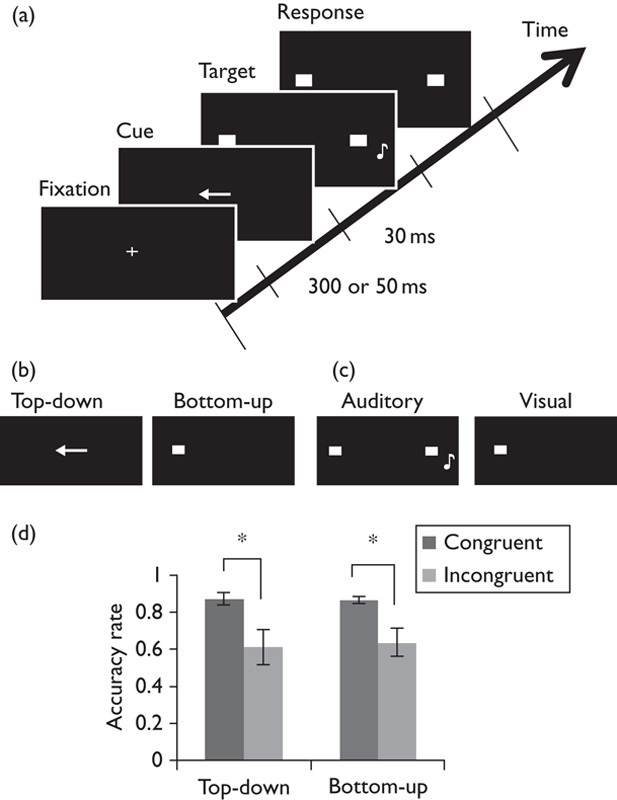Fig. 1.

Experimental task and behavioral results. (a) An example of the task procedure. Top-down or bottom-up cue was presented before the target stimuli appeared. Participants were asked to localize the position (left or right) of target stimuli (auditory target in sound localization task; visual target in visual-spatial task). (b) The type of cue stimuli. The left and right panels, respectively, show the top-down and bottom-up cue stimuli. (c) The type of target stimuli. The sound localization task, which consisted of 80% of total trials, used sound stimuli (left panel), and the visual-spatial task, which consisted of 20% of trials, used visual stimuli (right panel). (d) Accuracy rate in the sound localization task (n=11). Black and gray bars indicate the mean accuracy rate among the participants. Error bars indicate SE of the mean. *P<0.01.
